The Aspire Lens is an Intermediate Optimized (IO) monofocal IOL with an aspheric design that improves depth of focus and delivers sharper, high-quality vision. It helps reduce visual disturbances like glare and halos while enhancing intermediate vision for daily activities such as phone use, computer work, or viewing a dashboard. Reading glasses may still be needed for fine print, and for the best accuracy and outcomes, Dr. Anderson recommends laser-assisted cataract surgery.
1. What is a Cataract?
A cataract occurs when the eye’s natural lens becomes cloudy, scattering light and causing blurry vision. If this interferes with everyday tasks such as reading or driving, surgery may be advised. Cataracts affect nearly 60% of older adults and more than 24 million Americans. Common causes include aging, long-term sun exposure, diabetes, certain medications, and smoking.
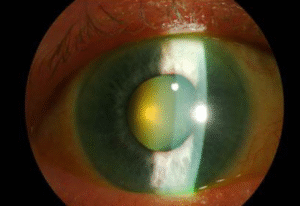
Cataract surgery video
2. How Do Cataracts Affect Your Vision?
Cataracts cause vision loss that cannot be corrected with glasses. They make everyday activities like reading, driving, and working harder, often leading to blurry vision and nighttime problems such as glare and halos. As cataracts progress and begin to seriously affect your vision and daily life, surgery is the only reliable way to restore clear sight.

CLOUDY OR BLURRY VISION

IMPAIRED NIGHT VISION OR GLARE

DISCOLORED VISION

FREQUENT NEED FOR NEW PRESCRIPTIONS
3. When is a cataract ready for surgery?
Questions to Ask Yourself Before Cataract Surgery:
- Do halos or glare at night make driving feel unsafe?
- Am I having trouble reading or watching television clearly?
- Have vision problems reduced my independence?
- Do bright lights cause discomfort or make it harder to see?
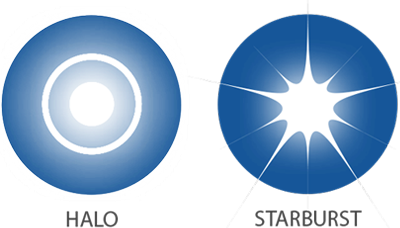
4. How are cataracts diagnosed?
AN EYE EXAM AND DIAGNOSTIC TESTS ARE PERFORMED INCLUDING:
A slit-lamp microscope is used to examine your eyes under magnification. This allows the Dr. Anderson to observe and assess the cataract in detail.
Advanced retinal cameras like Optos and OCT capture detailed images of the retina. These high-resolution scans help screen for diseases such as macular degeneration, enabling early detection and ongoing monitoring.
An IOL biometer carefully measures the eye to calculate the correct power of the intraocular lens (IOL) for cataract surgery. These measurements are essential for achieving the best possible vision after the procedure. While the testing process can take some time, it plays a critical role in determining how clearly you will see following surgery.
Macular Degeneration Screening
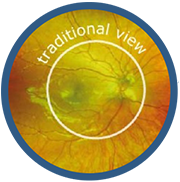
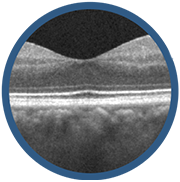
5. Where is cataract surgery performed?
Dr. Anderson performs cataract surgery at an ambulatory surgery center. While the procedure itself takes about 15 minutes, plan to spend 2–3 hours at the facility for preparation and recovery. Most patients are able to go home within 30 minutes after surgery. Dr. Anderson operates at Premier Surgery Center in Colorado Springs, a Medicare-certified facility that offers a safe and comfortable environment for your care.
aMBULATORY SURGERY CENTER

6. WHAT IS TOPICAL AND “TWILIGHT” ANESTHESIA?
Anesthesia

Cataract surgery is performed with conscious, or “twilight,” sedation.
This involves a mild form of anesthesia that helps you feel relaxed and drowsy while remaining comfortable throughout the procedure. You’ll need someone to drive you to and from your surgery, and you should avoid driving for at least 24 hours afterward, including for your first post-operative appointment.
7. What are the steps of cataract surgery?
THERE ARE THREE STEPS TO CATARACT SURGERY:
- The first step is to make tiny, precise incisions through the cornea and into the capsule of the cataract.
- In the second step, ultrasound energy is used to break up and remove the cataract.
- Finally, a clear artificial lens is inserted to restore vision and focusing power.
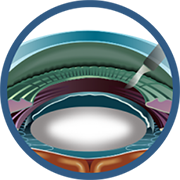
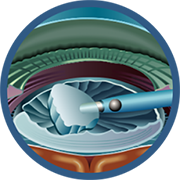
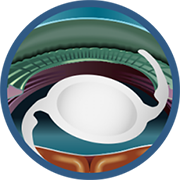
8. What is laser cataract surgery?
Laser cataract surgery is growing in popuLARITY
Laser-assisted cataract surgery offers enhanced precision and safety compared to traditional techniques. By using advanced laser technology to perform key steps, this approach can improve surgical accuracy, and promote faster visual recovery for patients.
9. What cataract lenses are available?
An intraocular lens (IOL) restores clear vision after cataract removal. Dr. Anderson will help you choose the IOL type that best fits your vision needs. For those who don’t mind wearing glasses, basic cataract surgery with a single vision or monofocal IOL provides excellent distance vision; however, glasses are still needed for near tasks such as reading or using a phone. It’s important to note that uncorrected astigmatism can reduce both distance and near vision after surgery. This option is covered by your insurance.

The Aspire lens is an enhanced monofocal option that improves intermediate vision, making tasks like viewing a phone or computer easier.
The ENVY, a next-generation trifocal IOL, provides a broader range of vision than traditional lenses, reducing dependence on glasses across distance, intermediate, and near vision.
Advanced lenses are available in toric versions to correct astigmatism.
While these options are not covered by insurance and involve additional cost, they allow for greater freedom from eyeglasses.
Lens Types
SINGLE VISION DISTANCE
This lens improves distance vision but usually requires reading glasses for near tasks, or full-time bifocals if significant astigmatism exists.
SINGLE VISION TORIC
A single-vision toric lens corrects astigmatism to provide sharp vision at one distance, but reading glasses are still needed for close-up activities.
ASPIRE IOL
A next-generation monofocal lens that provides excellent distance vision with enhanced intermediate focus, helping reduce reliance on glasses for tasks like computer work or dashboard viewing.
PANOPTIX AND ENVY TRIFOCAL
This lens provides clear vision at far, near, and intermediate distances, often reducing or eliminating the need for glasses. It can increase independence from eyewear, though some patients may notice nighttime halos or a slight decrease in distance clarity or contrast.
SYMFONY
Tecnis Symfony OptiBlue is an EDOF lens providing clear distance and intermediate vision; reading glasses may be needed for fine print. Its filter helps lessen night halos and glare, though some halos may still occur.
Custom Match
One attractive option is using a single-vision lens in one eye and a full-range lens in the non-dominant eye, providing clear distance and near vision while helping reduce nighttime halos.
Single Vision LENS VIDEO OVERVIEW



With a standard single-vision lens, cataract surgery typically provides clear distance vision, but reading glasses are still needed for close-up tasks. If you have astigmatism, you may also need glasses to sharpen both distance and near vision.
10. What if I Don’t Want to Wear Eyeglasses?
If you want to reduce your dependence on glasses after surgery, you can consider laser cataract surgery with a toric or full vision lens. These advanced lenses and procedures are not covered by insurance. A toric IOL can correct astigmatism to provide clear distance vision, but you may still need reading glasses for near tasks.
| NEAR | INTERMEDIATE | DISTANCE | ASTIGMATISM | |
|---|---|---|---|---|
|
Monofocal
Clear vision at one distance Need glasses for near vision Does not correct astigmatism |
+ | ++++ | ||
|
Toric
Optimizes vision in the distance Need glasses for near vision Corrects astigmatism |
++ | +++++ | ✓ | |
|
Panoptix/Envy
Max range of vision Reduced need for glasses Toric Model Corrects Astigmatism |
+++ | ++++ | +++++ | ✓ |
After Cataract Surgery Using Traditional Monofocal Lens
After Cataract Surgery Using Advanced Full Vision Lens



Cataract surgery with an ADVANCED FULL VISION LENS results in clear vision at distance, intermediate, and near without glasses.
11. What is the Aspire Lens?

12. What is the Envy Lens?
The Envy lens is a premium option that provides clear vision at near, intermediate, and far distances, often reducing the need for glasses. It is designed to improve contrast, lessen glare and halos, and can also correct astigmatism.
In a Canadian study of 110 patients, 94% reported little or no difficulty with close-up vision, and 93% were satisfied with their vision after surgery.
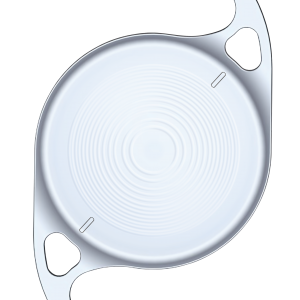
13. What is the Symfony Lens?
The Symfony Lens is designed to deliver sharper vision across multiple distances. Tiny circular grooves extend the range of focus, creating an elongated focus curve that helps maintain clear sight from far away up to arm’s length. Unlike standard single-focus lenses, it functions like wearing +1.0 D reading glasses, providing both distance and intermediate vision with less reliance on glasses. Halos around lights at night are common and should be expected.
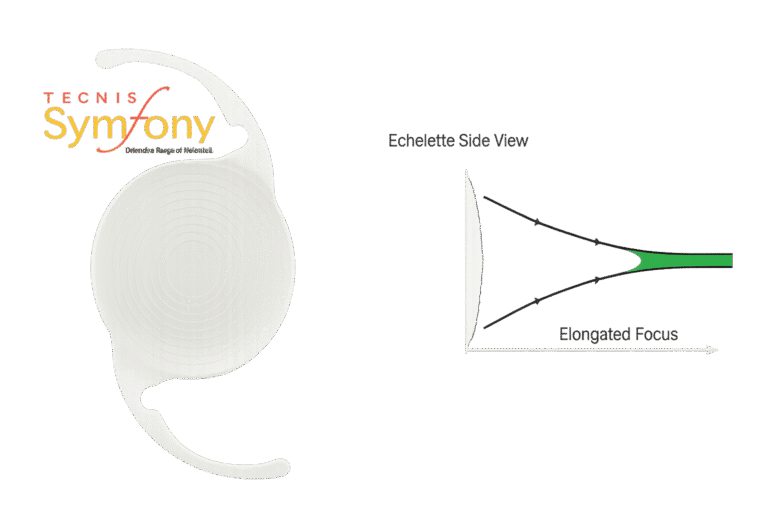
14. What is The Clareon PanOptix Pro?
The Clareon PanOptix Pro lens is designed to deliver clear vision at near, intermediate, and distance ranges, helping many patients reduce or even eliminate their need for glasses after cataract surgery. Compared to the Symfony lens, it typically provides better near vision, though distance clarity may not be quite as sharp. Its advanced design enhances image quality, offers smoother transitions between distances, and reduces glare or halos compared to older lens models. As with all premium lenses, some patients may still experience side effects such as halos, glare, or decreased contrast sensitivity, particularly at night.
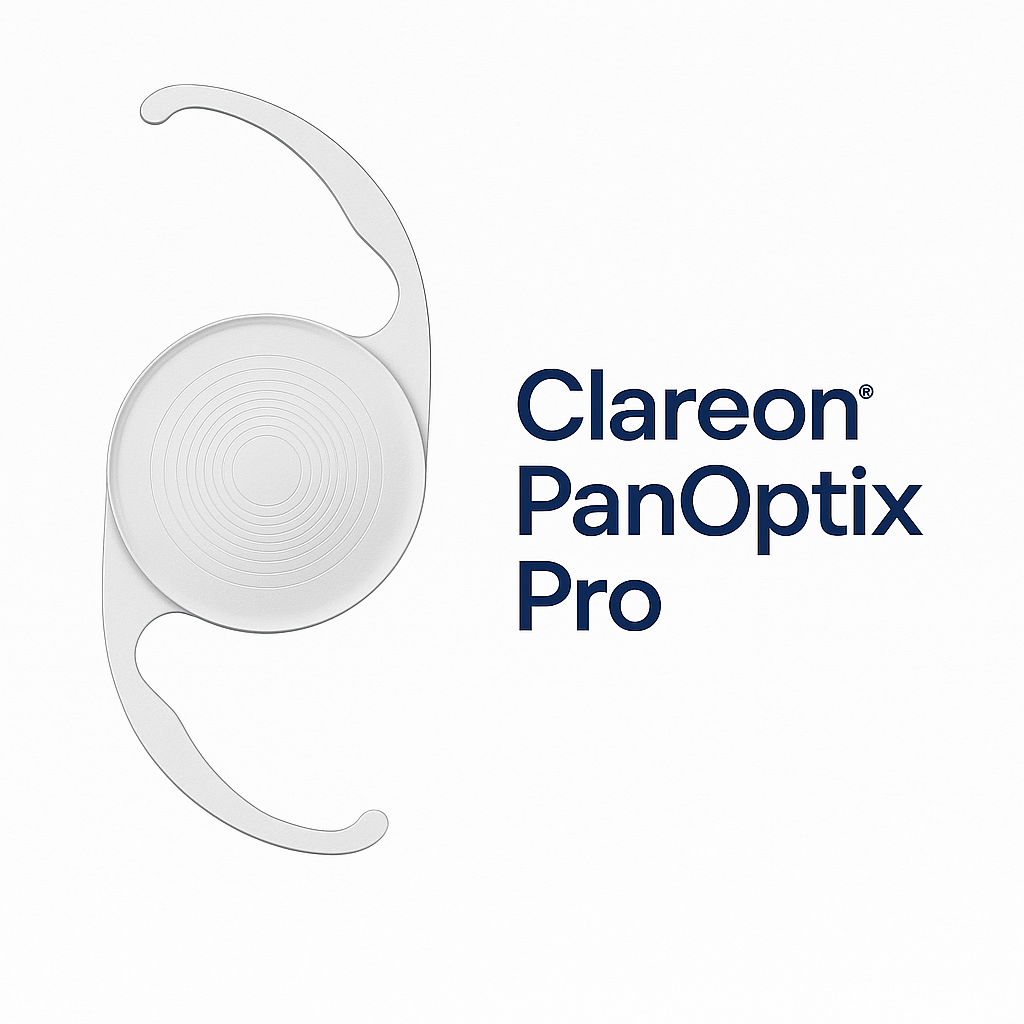
15. What are the side effects of full vision lenses?
Full vision lenses provide an improved range of vision but may cause nighttime halos and a reduction in contrast. Most patients find these effects manageable, and they often improve with time. You can view the sample night images below or use the Cataract Simulator to see how these changes might appear.
Single Vision Lens
Full Vision Lens
Previous
Next
16. What is Monovision?
Monovision corrects near vision loss by focusing one eye for distance and the other for near tasks, reducing the need for reading glasses. The dominant eye is set for distance, while the non-dominant eye is made nearsighted. However, some patients may experience side effects such as reduced depth perception, difficulty with night driving, or balance issues.
17. How can I decide with so many options? Use this IOL Selection Guide
1. Insurance-Covered Option
Do you want a lens covered by insurance?
» Choose: Single-vision (monofocal) IOL for clear distance vision.
» Glasses Needed: Reading glasses for near tasks.
» If significant astigmatism: With high astigmatism, full-time eyeglasses are needed.
Enhancement: Laser-assisted cataract surgery recommended for most precise placement.
2. Best Distance Vision (Driving Priority)
Goal: Sharpest distance vision (e.g., driving).
» Choose: Toric single vision IOL focused on distance + reading glasses for near.
Enhancement: Laser-assisted cataract surgery recommended for most precise placement.
3. Monovision (One Eye for Distance, One Eye for Near)
Goal: Reduce dependence on glasses by correcting one eye for distance and the other for near.
» Choose: Monofocal IOLs set for different focal points.
» Glasses Needed: May still need glasses for some tasks or to fine-tune vision.
» Important: Only recommended if you have successfully used monovision for several years without side effects such as poor driving vision or lack of depth perception.
Enhancement: Laser-assisted cataract surgery recommended for best accuracy.
4. Best Distance + Intermediate Vision (Daily Tasks)
Goal: Excellent vision for driving, computer use, dashboard viewing, etc.
» Choose: Aspire IOL for improved intermediate range + great distance.
Enhancement: Laser-assisted cataract surgery recommended for optimal accuracy.
5. Best Full-Range Vision (Minimal Glasses Use)
Goal: Crisp near, intermediate, and distance vision with maximum spectacle independence.
» Choose: Envy IOL (premium trifocal lens).
Enhancement: Laser-assisted cataract surgery recommended for best results.
Lens Selection Summary
| Your Priority | Recommended Lens | Glasses Needed | Laser-Assisted Surgery |
|---|---|---|---|
| Insurance-covered | Monofocal (single vision) | Reading glasses; bifocals if high astigmatism | Not included |
| Best distance (e.g., driving) | Toric monofocal (distance-focused) | Reading glasses for near | Recommended for precise placement |
| Monovision (for patients with prior tolerance) | Monofocal IOLs set for different focal points (one eye distance, one eye near) | May still need glasses for driving or extended reading; only if previously tolerated without poor driving vision or loss of depth perception | Recommended for best accuracy |
| Best distance + intermediate vision | Aspire IOL | Reading glasses for fine print | Recommended for optimal accuracy |
| Best full-range (near, intermediate, far) | Envy IOL | Minimal or no glasses | Recommended for best results |
18. What eye drops do I need?
Dr. Anderson prescribes two drops twice a day for 30 days. These will be sent to your local pharmacy. There is also an option for a combination drop thru OSRX.
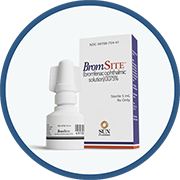
19. What Does Cataract Surgery Cost? Does Medicare Cover Cataract Surgery?
Cataract surgery is medically necessary and covered by most health insurance plans.
Patient costs vary based on your copay and deductible. For example, Medicare covers 80% of cataract surgery costs after the deductible is met, and most supplemental plans cover the remaining 20%. Self-pay cataract surgery with Dr. Anderson ranges from $3,000 to $5,500 per eye.
20. What are the risks and complications of Cataract Surgery?
According to the American Society of Cataract and Refractive Surgery (ASCRS), about 4.5 million cataract surgeries are performed each year, with a success rate of 98%. Although uncommon, possible complications include infection, retinal detachment, or the need for additional surgery.
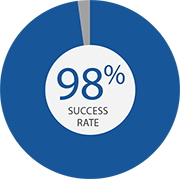
21. Can Cataract Surgery Prolong Your Life
A RECENT STUDY SHOWED A 60% LOWER RISK OF DEATH.
A 20-year study of 74,000 women found a 60% lower risk of death in those who had cataract surgery. Improved vision can increase mobility, medication safety, and visual contrast—helping prevent fatal accidents
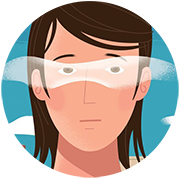
22. What is posterior capsule opacification (PCO)
A PCO IS A THICKENING OF THE LENS CAPSULE.
Posterior capsule opacification (PCO) is a common condition that can occur months or years after cataract surgery. It happens when the thin membrane holding the lens implant becomes cloudy, causing blurred vision, glare, or halos—similar to having another cataract. PCO is easily treated with a quick, painless YAG laser procedure that restores clear vision.
PCO
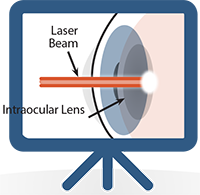
23. What is the preoperative preparation for cataract surgery?
PLEASE AVOID ANY FOOD FOR 12 HOURS PRIOR TO SURGERY.
Before surgery, arrange for a ride to and from the center. Do not eat or drink for 12 hours before your procedure. Take blood pressure or heart medications with a sip of water if needed. The visit will take about 2–3 hours. Wear comfortable clothes and avoid eye makeup.
DON’T EAT FOR 12 HOURS BEFORE SURGERY
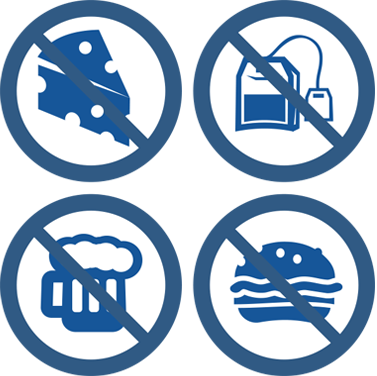
24. What the post-operative instructions after cataract surgery?
Post-Surgery Care Instructions
Protect your eye: Avoid touching or rubbing the eye. A clear shield will be placed to prevent accidental rubbing while you sleep for 24 hours.
Activity at home: You may move around the house, but avoid strenuous activity. Do not lift more than 25 pounds, as this may increase eye pressure. Normal activities can usually be resumed by the end of the first week.
Exercise: Light exercise (such as treadmill walking) may be 5 days after surgery. Avoid swimming for at least two weeks.
Bathing: You may bathe carefully, but try to avoid getting a direct stream of water into your eyes.
Online Instructions: [Click here for additional cataract surgery instructions]

25. What’s the recovery time and time off work after cataract surgery?
Most patients are able to return to work within 3 days after cataract surgery, depending on their recovery and the type of work they do. For desk or computer-based jobs, many return in 3 days. However, those with physically demanding jobs, heavy lifting, or exposure to dusty environments may need a week or longer. Your surgeon will give personalized guidance based on your healing and lifestyle.

“Most people are back to work within a week.”
Considering cataract surgery? Book an evaluation with Dr. Anderson.
If you have cataracts, it’s important to consult an eye care professional to discuss your specific needs and treatment options. With Dr. Anderson’s advanced expertise and comprehensive services, you can be confident in receiving personalized, effective care.
